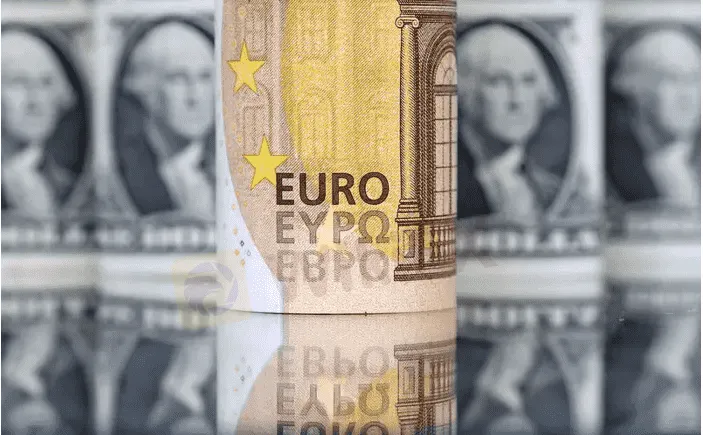简体中文
繁體中文
English
Pусский
日本語
ภาษาไทย
Tiếng Việt
Bahasa Indonesia
Español
हिन्दी
Filippiiniläinen
Français
Deutsch
Português
Türkçe
한국어
العربية
Euro fragile as Fed hike looms, gas risks weigh
Abstract:The euro nursed losses on Wednesday after its sharpest drop in two weeks, as a cut in Russian gas supply sent energy prices soaring, while the dollar held ground ahead of an expected U.S. interest rate hike later in the day.

The euro fell about 1% to $1.0108 overnight, the largest fall since July 11 and was steady in early Asia trade at $1.0139. Europes growth remains vulnerable to Russian gas supplies, which have become a major risk since the start of the Ukraine war.
Flows along the Nord Stream pipe from Russia to Germany fell on Tuesday and will drop further on Wednesday.
“Energy supply is likely to remain a key issue for the European economy over the coming months,” said Kristina Clifton, a currency strategist at Commonwealth Bank of Australia. “The euro can trade below parity, more than just briefly (and) sooner rather than later.”
Elsewhere moves have been restrained ahead of the Federal Reserves policy announcement due at 1800 GMT. The yen was steady at 136.98 per dollar. The Australian and New Zealand dollars edged marginally higher in early trade, but were kept below Tuesday highs. Sterling hovered at $1.2048.
Analysts said the Australian dollar could rise if inflation data due at 0130 GMT surprises on the upside. Headline inflation is expected to hit a three-decade high of 6.2%. The Aussie was last up 0.2% at $0.6950 and the kiwi rose 0.2% to $0.6243.
Markets have priced in a 75 basis point Fed hike later on Wednesday, with a 13% chance of a supersized 100 bp raise.
Focus will also be on the news conference at 1830 GMT for any hint that policymakers resolve to hike further is waning as growth slows.
“Its more of a wait-and-see rather than the expectation of a large surprise,” said Galvin Chia, emerging markets strategist at NatWest Markets.
He expects the U.S. dollar to remain supported by safe haven flows over the longer term, amid a darkening global outlook.
Overnight data showed U.S. consumer confidence falling to a nearly 1-1/2 year low and new home sales slumping, while Walmart shares slid after the retailer issued a profit warning.
Last week European manufacturing data was soft.
“Downside risks to the eurozone growth and broader growth concerns globally tends to suggest more dollar strength,” Chia said.
The U.S. dollar index stood at 107.08, not far below mid-Julys 20-year high of 109.290. It gained 0.64% overnight, snapping three straight sessions of declines.

Disclaimer:
The views in this article only represent the author's personal views, and do not constitute investment advice on this platform. This platform does not guarantee the accuracy, completeness and timeliness of the information in the article, and will not be liable for any loss caused by the use of or reliance on the information in the article.
Read more

Risk Management: Turning Potential Into Profit
In Forex Trading, Without Effective Risk Management, You Risk Huge Losses and the Complete Depletion of Your Account.

Is it a good time to buy Korean Won with the current depreciation?
The exchange rate of the South Korean won in 2025 is expected to be highly uncertain, influenced primarily by the dual challenges of economic slowdown and political instability.

US Dollar Surge Dominates Forex Market
The global forex market continues to show volatility, with the U.S. dollar fluctuating last week but overall maintaining a strong upward trend. How long can this momentum last?

Oil Prices Soar for 5 Days: How Long Will It Last?
Last week, the global oil market saw a strong performance, with Brent crude and WTI crude prices rising by 2.4% and around 5% respectively. Oil prices have now posted five consecutive days of gains. But how long can this rally last?
WikiFX Broker
Latest News
Ghana Trader Jailed for $300K Forex and Crypto Scam
US Dollar Surge Dominates Forex Market
Hong Kong Police Bust Deepfake Crypto Scam Syndicate Involving $34 Million
Is it a good time to buy Korean Won with the current depreciation?
BlackRock Bitcoin ETF Outflows Hit $332M in Single Day
XRP Price Prediction for 2025: Will It Hit $4.30 or More?
Exnova Scam Alert: Account Blocked, Funds Stolen, and Zero Accountability
T3 Financial Crime Unit Freezes $100M in USDT
Terra Founder Do Kwon Denies Fraud Allegations in U.S. Court
Dr. Sandip Ghosh, Ex-RG Kar Principal, Involved in Multi-Crore Scam
Currency Calculator






